Photographs: Jonathan Claybaugh/Creative Commons Geetanjali Krishna
Time seems to have stopped in the mountain desert of Spiti, where nature constantly fights off civilization.
A lone cloud meandered across a vivid blue sky. Blue sheep grazed on thorny scrub, while a thousand feet below two yaks ploughed a small field near a village perched precariously on the edge of a desert mountain. And I was somewhere in the middle of it all, in a place historically called The Land in the Middle, known to the modern world as Spiti.
Hiking at an altitude of 14,700 feet in the territory of the snow leopard and the Himalayan wolf, I followed a Himalayan griffin lazily soaring over the road towards Komic, Asia's highest village.
Why Spiti, my bemused family and friends asked when I announced my travel plans a lifetime of a week ago. It's so remote that few people, even those from Himachal Pradesh, know much about it. Most of its population of 10,500 lives in tiny villages, some with as few as three houses.
Spiti lags way behind any city or village I've ever visited - its roads are non-existent, power supply has been cut for three months now, and all it has by the way of telephone lines is a BSNL network that rarely works - that too only in Kaza and Tabo. And this is in summer, when life's easy.
Winter temperatures drop to minus 30 degrees Celsius and deep snow blocks the surrounding mountain passes and entry points into Spiti.
Villagers have no source of income, burn dried animal dung to keep warm and subsist on the dry rations they've saved all summer.
Want to share your travel story and pictures? Simply write in to travelpicsga@rediffmail.com (subject line: 'My Travel Story'), along with pictures of the destination you're writing about. We'll publish the best ones right here on rediff.com!
Travel: In the middle of nowhere
Image: Tabo Gompa, Spiti, Himachal PradeshPhotographs: Michael Scalet/Creative Commons
But the pleasures of Spiti lie elsewhere. Its landscapes are stunning, the people friendly and its local brew, Ara, strong and tasty.
A deep and ancient faith underpins all its cultural life. Its stunning monasteries practically sketch out the history of Buddhism in the Himalayas.
Indeed, when I entered Spiti, I felt as if I'd walked into a time warp.
We began with Tabo Monastery, Chogs-hkhor, the oldest continuously functioning Buddhist monastery. The mind boggled at the idea that this place has seen prayers every day for a thousand years.
How had its iconography survived a millennium hidden behind these mud walls, I wondered. One of the monks said the monastery was so well-preserved because it seldom rained in Tabo. "But now, the climate is changing, we've started seeing rain here. I wonder how much longer Tabo will stand," he says.
The Dalai Lama has often said he'd like to retire to Tabo. Hearing echoes of ancient faith reverberate through its cool mud walls and still-brilliant wall frescos, I could see why.
Travel: In the middle of nowhere
Image: Dhankar Gompa, SpitiPhotographs: Wildestseas/Creative Commons
Dhankar, the erstwhile capital of Spiti, was our next stop.
Steeped in myth and legend, its 9th century monastery clung to a precipitous cliff at 12,700 feet, facing a tiny village of mud-washed houses.
Two kilometres uphill, we were told, was a magical lake. But I'd not reckoned with the altitude and intense sunlight. Lungs afire, I huffed and puffed, pretending to stop to take pictures or eat the local seabuckthorn berries when all I was actually doing was catching my breath.
I somehow made it to the faraway rock where our guide, Chhering, was waiting and asked him where the lake was. "Good job, madamji," he said bracingly. "You're half way there!" But the still and frigid waters of Dhankar lake mirroring the snow peaks and blue skies were wellworth the labour.
The story goes that long ago, an inebriated horseman decided to test the depth of Dhankar. He galloped in, never to be seen again. Days later, his little finger and a bit of his riding crop appeared in a rivulet around half a kilometre from the lake.
Every year, women hike up to the lake to pray for adequate water in the Dhankar to irrigate their fields.
Post a frugal lunch (the only guesthouse in Dhankar had shut down early in anticipation of winter), we embarked on the 35-km drive to Kaza, the district headquarters of Spiti. But distances have little meaning in Spiti where the roads have been totally thwarted by the mountains.
The chill of the desert night causes rocks to contract. When they expand in the heat of the intense Spitian sun, they set off landslides, big and small.
As we navigated landslide after landslide, aided in no small part by earthmovers and road-rollers, I realised that roads here will probably never be perfect. All one can do is hire a good local driver - and travel on.
Travel: In the middle of nowhere
Image: Kee Monastery, SpitiPhotographs: SilverBirch/Creative Commons
Two thousand feet above Kaza lay Spiti's largest and most powerful monastery, Kee.
The low buildings nestled on a conical hill looked much like the PotalaPalace in Lhasa. Walking through the rooms where the Dalai Lama had stayed, I again felt as if I were reliving the entire history of Buddhism.
Later, in a homestay in the village of Demul, my host, Gantuk Namgyal, told me his young son was studying to be a monk there. The Spitians have a custom of sending younger sons to the monastery, while the eldest inherits the family land. Consequently, their population has actually declined in the last decade.
Namgyal's mother pressed cup after cup of tea on me as we chatted in the warmth of their kitchen after a delicious dinner of Kiu - potato curry with dumplings.
Homestays, I realised, were a great way for visitors to get an authentic taste of local culture.
"They're a welcome source of revenue for villagers too. Also, when villagers see themselves through the admiring eyes of their guests, they develop more pride in their unique ecology and culture," said Ishita Khanna of Spiti Ecosphere, who had organised our trip.
Travel: In the middle of nowhere
Image: Kibber village, Spiti.Photographs: 4ocima/Creative Commons
I woke up to Namgyal's mother chanting Buddhist prayers, and later, fortified by the bread and tea they pressed upon me, I was prepared for the tough but beautiful trek from Demul to Komic through KibberNational Park.
Namgyal offered the services of his trusty Chumurti horse, a prized local breed, which I gratefully accepted. Khanna was right.
Near the mountain top, when we found a stone with an ammonite fossil, a clear impression of a long dead marine creature that lived in the Sea of Tethys before the Himalayas were born, Chhering beseeched us to leave the fossil where we had found it. "How else will we preserve our heritage?" he asked. So that's what we did.
Travel: In the middle of nowhere
Image: Chandrataal, the lake where fairies are believed to dance on moonlit nights and stories of UFO sightings abound.Photographs: 4ocima/Creative Commons
How could we leave Spiti without stopping at the magnificent Kunzum La, one of India's highest motorable pass that separates Spiti from the rest of the world?
Beyond was the 14-kilometre detour to Chandrataal, the lake where fairies are believed to dance on moonlit nights and stories of UFO sightings abound. Looking at the unearthly blue and lunar starkness of the lake, I could well imagine why it would be more a home for fairies and aliens than humans.
I sat on the banks of Chandrataal and thought long about why Spiti had moved me the way it had. Of course, its landscapes were stunning, the monasteries peaceful and the culture, vibrant. But what endeared this mountain valley to me were its people, so happy in spite of their hard lives devoid of most of the trappings of modern civilisation.
Maybe that was why I knew that even though I'd soon leave the place, Spiti would never leave me.
Want to share your travel story and pictures? Simply write in to travelpicsga@rediffmail.com (subject line: 'My Travel Story'), along with pictures of the destination you're writing about. We'll publish the best ones right here on rediff.com!


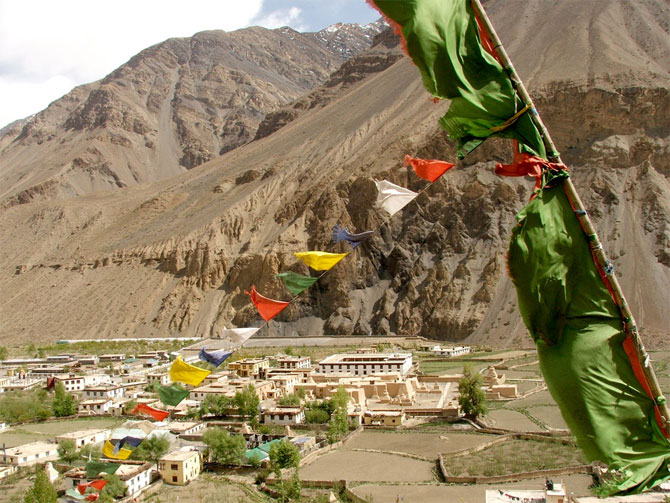
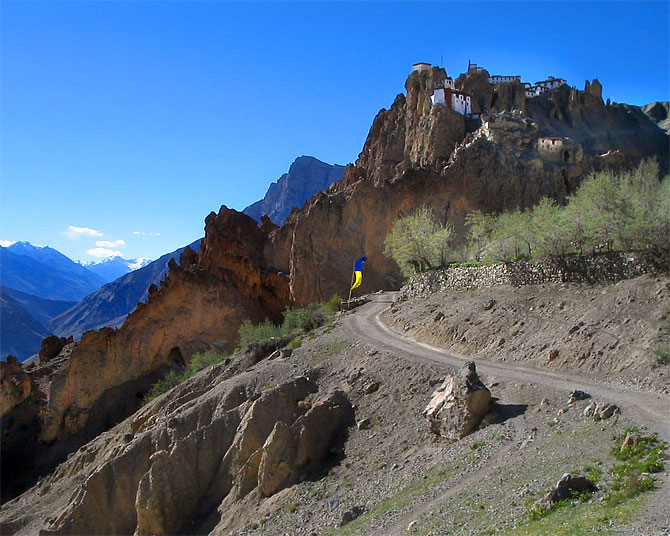
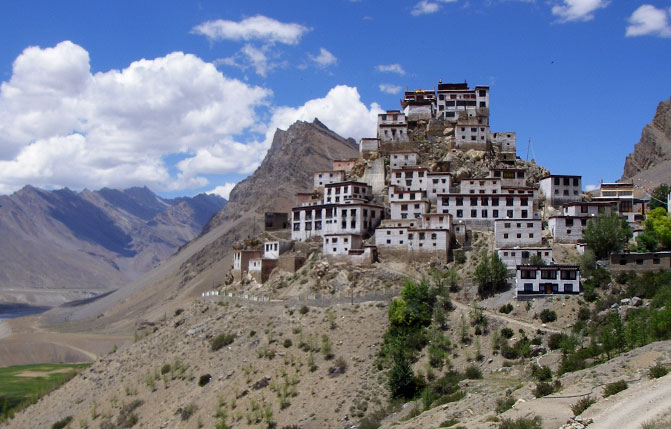
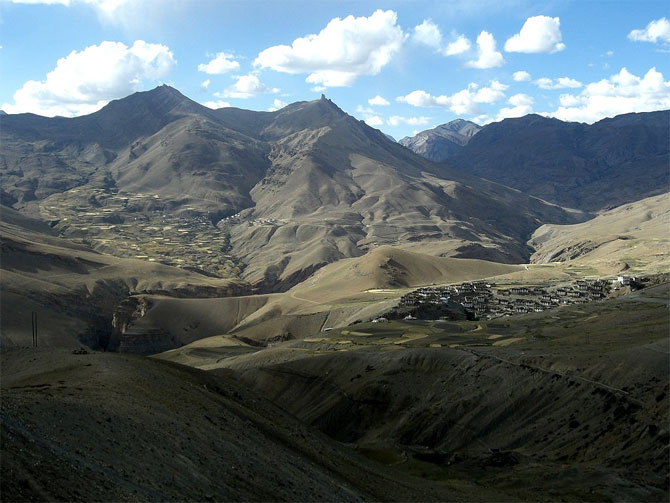
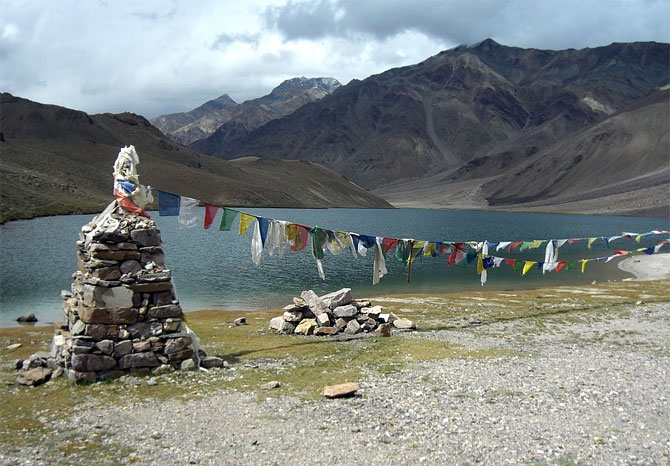

Comment
article